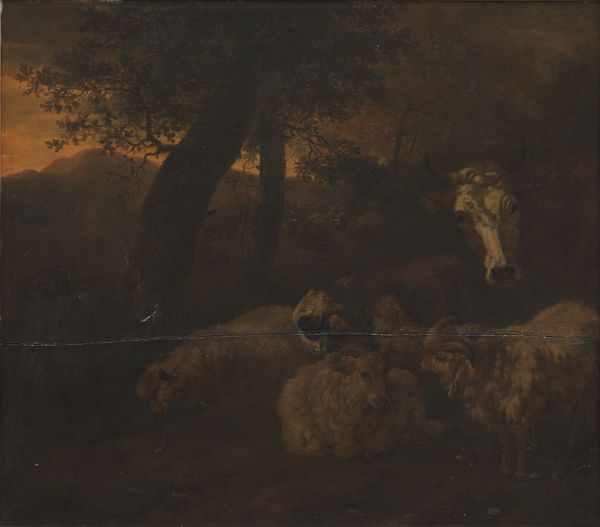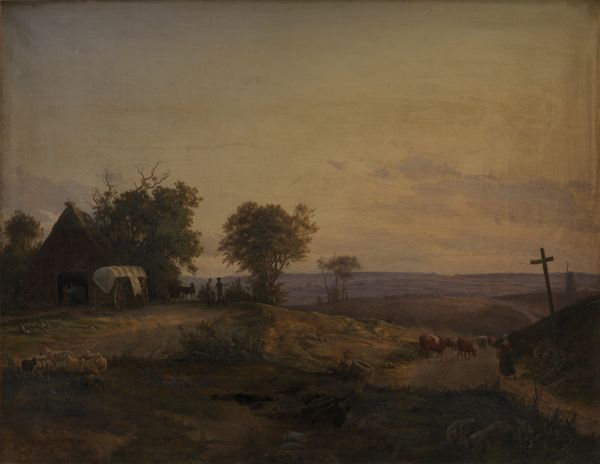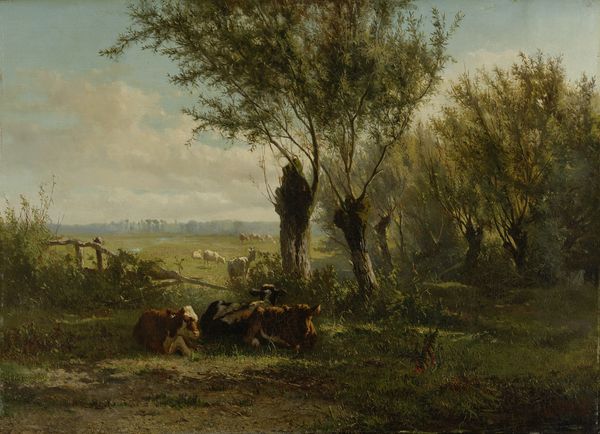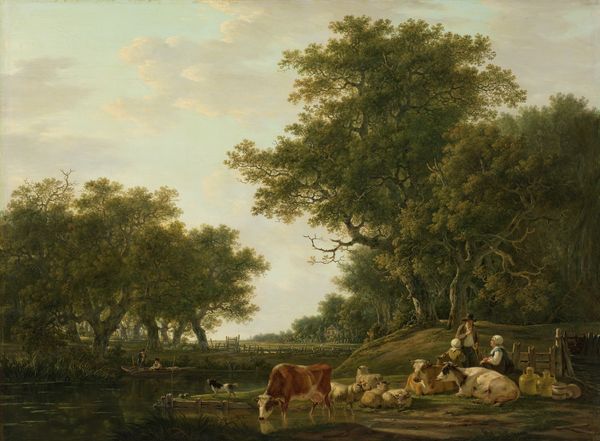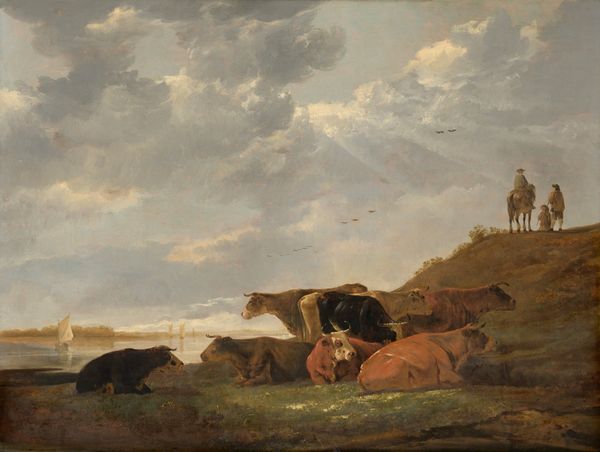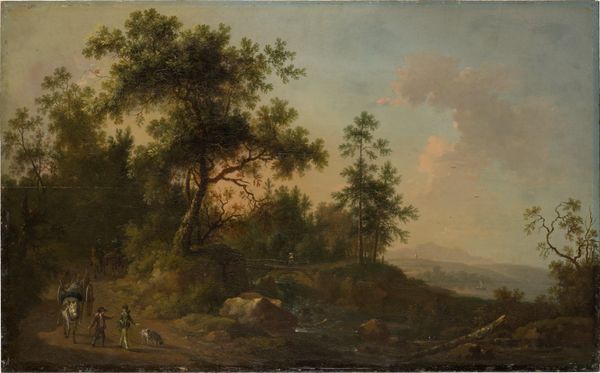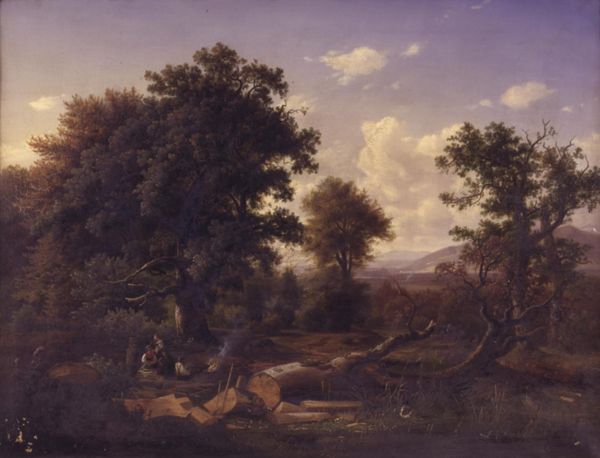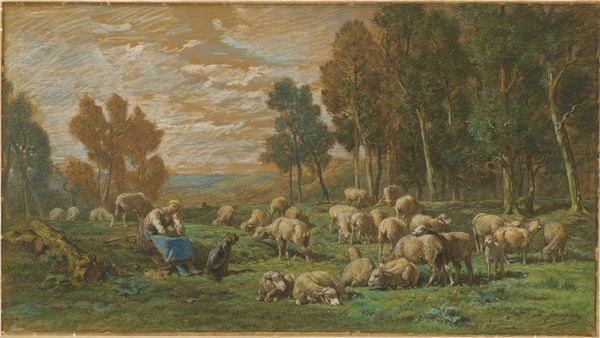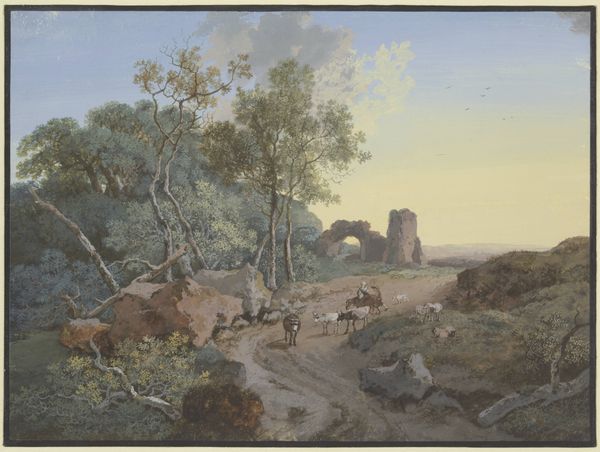
painting, plein-air, oil-paint
#
painting
#
plein-air
#
oil-paint
#
landscape
#
oil painting
#
romanticism
#
genre-painting
#
realism
Dimensions: 33 cm (height) x 51.5 cm (width) (Netto)
Editor: Johan Thomas Lundbye’s oil painting, "Evening Scene with Sheep on a Mound," created in 1845, evokes a serene, pastoral mood. The sheep huddle together, contrasting with the looming stones in the background. What historical context should we consider when looking at this work? Curator: It’s crucial to understand this painting within the context of Danish Golden Age art and its nationalist sentiments. The landscape, with its dolmens—ancient burial monuments—is not merely picturesque. Lundbye is engaging in a dialogue about Danish identity and its connection to the land. How might this image play into contemporary notions of nationhood and heritage? Editor: So, the sheep and the landscape are symbols… of Denmark itself? Curator: Precisely. The seemingly simple scene speaks to larger socio-political forces. Lundbye’s attention to detail, observed en plein air, grounds the romantic idealism in a certain realism, fostering a sense of authentic connection to the Danish countryside. Editor: That's fascinating. It's more than just sheep in a field. Was there a particular audience he was trying to reach? Curator: Certainly. Lundbye, along with his contemporaries, aimed to create a visual language that could both represent and shape a shared sense of national identity amongst the rising middle class who were increasingly visiting museums and art exhibitions. Do you think this kind of visual storytelling still works today? Editor: It makes you think about what symbols are used today to unite people. This has really broadened my understanding of the painting. Curator: It is enlightening to recognize how artistic choices, even in seemingly bucolic scenes, engage with cultural and historical discourses. It reminds us that art rarely exists in a vacuum.
Comments
No comments
Be the first to comment and join the conversation on the ultimate creative platform.

